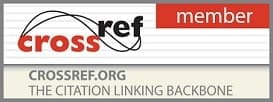
Peer Reviewed Journal
2025, Vol. 8, Issue 2, Part B
From womb to womanhood: Nursing perspectives in obstetric and gynaecological care
Heena Bahl
Background: Women’s health spans a continuum from adolescence through menopause, requiring holistic, evidence-based, and compassionate nursing care. Obstetric and gynecological nursing plays a pivotal role in promoting safe motherhood, reproductive rights, and gender equity across life stages. Objective: This integrative review aimed to synthesize nursing perspectives, interventions, and outcomes in obstetric and gynaecological care from a life course framework, highlighting evidence-based practices, psychosocial dimensions, and systemic challenges. Methods: A systematic literature search was conducted across PubMed, CINAHL, Scopus, and Web of Science using MeSH terms related to “obstetric nursing,” “gynaecologic nursing,” and “continuum of care.” Seventy-two studies (2010-2025) were included following PRISMA guidelines. Data were synthesized thematically and appraised using Joanna Briggs Institute (JBI) quality criteria. Results: Nurse-led interventions demonstrated significant improvements in maternal and neonatal outcomes, psychosocial well-being, and reproductive health literacy. Continuity of midwifery care reduced preterm births and caesarean rates, while tele-nursing enhanced antenatal compliance. Educational programs improved menstrual hygiene and family planning adoption. However, persistent barriers include workforce shortages, compassion fatigue, inadequate policy support, and cultural constraints. Conclusion: Nursing perspectives are integral to advancing women’s health across the “womb to womanhood” continuum. Empowerment-focused, evidence-based, and culturally sensitive care models led by nurses enhance quality, equity, and satisfaction. Strengthening workforce capacity, digital integration, and policy advocacy is essential for sustainable improvements in obstetric and gynaecological outcomes
Pages : 78-86 | 66 Views | 24 Downloads

How to cite this article:
Heena Bahl. From womb to womanhood: Nursing perspectives in obstetric and gynaecological care. Int J Midwifery Nurs Pract 2025;8(2):78-86. DOI: 10.33545/26630427.2025.v8.i2b.213
Important Links
Subscription Information
- Nursing Journal Subscription
- Medical Journal Subscription
- Pharmaceutical Journal Subscription
- Medicine Journal Subscription
- Anesthesiology Journal Subscription
- Gynecology Journal Subscription
- Subscription of Nursing Journal
- Community Health Nursing Journal Subscription
- Gynaecological Nursing Magazine Subscription
Research Products







 Other Journals
Other Journals
